Are your SEM campaigns feeling more “meh” than magical? Search Engine Marketing (SEM) is one of the most powerful tools in digital marketing, but only if you know how to wield it effectively.
When done right, SEM can drive high-quality traffic, boost conversions, and make sure your brand stands out on search engine results pages (SERPs). The trick? Optimizing your campaigns to balance cost-efficiency and results.
But where should you start? We've got you covered.
Understanding the Basics of SEM Optimization
Before we can dive into the how-to of SEM optimization, we need to lay some basic groundwork.
SEM is all about using paid ads to appear on search engine results pages (SERPs). Think Google Ads, Bing Ads, or any other pay-per-click (PPC) platforms where you can showcase your brand.
What makes SEM perform better than tossing darts at an invisible board of potential customers? Metrics. Here’s are a few you should keep an eye on:
-
Click-Through Rate (CTR): The percentage of people who see your ad and decide, "Yes, I’ll click this!"
-
Cost Per Click (CPC): How much you're paying each time someone takes the bait.
-
Quality Score: A magical combination of relevance, user experience (UX), and historical performance that determines how your ad ranks.
-
Return on Investment (ROI): Ultimately, what matters most—is your SEM strategy raking in more dollars than you're spending?
There are a few factors that can impact SEM performance, namely, the quality of your ad copy (it needs to really pop), how relevant your landing pages are to the search terms, the alignment between your budget and target audience, and, since the algorithms are fond of keeping you on your toes, the latest updates from Google.
The Step-by-Step Guide to SEM Optimization
Whether you’re just starting out or looking to refine an existing SEM strategy, here are some tips to help you make the most of your approach:
Effective Keyword Research
If SEM campaigns were a delicious pizza, keyword research would be the crust holding it all together. Choosing the right search terms is the foundation of any successful SEM strategy. You need the perfect mix of specific keywords that your potential customers are searching for.
One way to do this is by targeting a balance of long-tail keywords (those super-specific, low-competition phrases) and competitive terms. Long-tail keywords, though they may have a lower search volume, tend to attract users further along in the decision-making process. Think “black leather office chair with armrests” versus just “office chair.”
There are fantastic tools available to make your keyword research straightforward. Google Keyword Planner is great for identifying search queries and estimating cost-per-click (CPC). Other tools like SEMrush and Ahrefs give you deeper insights into your competitors’ keywords and traffic.
The importance of targeting the right keywords can’t be overstated. Specific keywords that match your audience’s intent are more likely to increase your quality score and boost your ad placement. And remember, higher relevance often means paying less per click. Win-win.
Crafting Compelling Ad Copy
Done with keyword research? Good. Now, it’s time for the secret sauce of SEM optimization: creating compelling ad copy. Your ad campaign can live or die by the strength of the words you choose. To grab attention and convert clicks into customers, focus on writing ad headlines and descriptions that resonate with your target audience.
Powerful ad copy isn’t just about sprinkling in some keywords; it’s about crafting a message that entices potential customers to act. Include clear calls to action (CTAs) like “Shop Now,” “Sign Up Today,” or “Start Your Free Trial.” Align these CTAs with the intent of your search queries for maximum relevance. If someone’s looking for “affordable SEO tools,” your ad better highlight great pricing.
A/B testing is your best friend here. Run multiple variations of your ads to see which combination of headlines, CTAs, and descriptions generates the highest click-through rate (CTR). Even small tweaks, like adjusting your headline’s tone or updating the CTA language, can make a huge difference.
Optimizing Landing Pages
Imagine this scenario. A potential customer clicks on your ad expecting magic, only to land on a page that doesn’t deliver. They’ll bounce faster than you can say “pay-per-click.” Enter landing page optimization, where the goal is to ensure your landing pages align seamlessly with your ads.
First, your landing page’s content must deliver on the promise in your ad copy. If your ad promotes “20% off organic skincare,” your landing page needs to be singing the same tune. Consistency is key to building trust and improving conversion rates.
User experience (UX) is also critical. Keep navigation easy, minimize distractions, and ensure your most important message is above the fold. Loading speed is non-negotiable; no one has the patience for a slow site in 2024. And don’t forget mobile-friendliness. With so many potential customers browsing on their phones, your page needs to shine on smaller screens, too.
Bidding Strategies
Now, let's talk about everyone's favorite part of SEM campaigns: ad spend. Getting your bidding strategy right is essential to maximizing your return on investment (ROI). The two main options are manual and automated bidding.
Manual bidding gives you full control over your cost-per-click (CPC), which is a great option if you’re working within a specific budget. Automated bidding, on the other hand, leverages Google Ads' algorithms to automatically adjust your bids to achieve your desired goals, whether that's maximizing clicks, conversions, or brand awareness.
Another smart move is adjusting bids based on factors like location, device, and time. For example, if your analytics reveal that most of your target audience browses on mobile devices during lunch breaks, increase your bids during those times for better visibility.
Finally, it’s essential to set an optimal budget upfront. Spread your ad spend wisely across campaigns, focusing a larger chunk on the most profitable search terms. Remember, though, that even the best SEM strategy needs flexibility. Keep monitoring your spend to avoid burning through your budget too quickly.
Analyzing and Adjusting Campaigns
With your ads live, the work doesn’t stop there. Analyzing and adjusting your campaigns is the heartbeat of search engine marketing. Without meaningful data analysis, you’re essentially flying blind.
Start by tracking performance using analytics tools like Google Ads, which provides detailed metrics on CTR, impressions, and conversions. Another must-use tool is Google Analytics, which can connect your ad campaigns to specific user behavior on your site.
Use this data not only to identify what's working but also to refine your campaigns. Are certain ads underperforming? Look at their click-through rates and keywords, then test new combinations of ad copy and landing pages. Data-driven tweaks will help you continuously improve your quality score and lower your CPC while increasing conversions.
One reason ongoing optimization matters is that algorithms, competition, and user behavior don’t stay static. Refreshing your SEM strategy makes sure you stay ahead, appearing prominently on search engine results pages (SERPs) and outpacing your competitors.
Common SEM Mistakes to Avoid
Even the best intentions can result in blunders that cost valuable ad spend without delivering the desired results. The good news? Most of these pitfalls can be avoided.
First off, overlooking negative keywords is like inviting spam to your party. These are the search terms you specifically don’t want your ads to appear for. If you're selling high-end fashion, you don’t want your ad popping up for someone searching "cheap jackets." Ignoring negative keywords can blow up your cost per click (CPC) and lower the quality of your leads.
Another common mistake is underestimating the importance of Quality Score on platforms like Google Ads. This score reflects how relevant your ad copy and landing pages are to the specific keywords you're targeting.
A low Quality Score increases your cost per click and lowers your chances of ranking well in search engine results pages (SERPs). Think of it as Google telling you, "Your ad needs more matchy-matchy vibes."
Finally, failing to monitor and adjust campaigns consistently is a guaranteed way to bleed ad spend. SEM isn’t "set it and forget it." Algorithms, user behavior, and search queries evolve constantly. If you’re not analyzing your metrics, adjusting bids, or improving your ad copy, you’re likely leaving money (and potential customers) on the table.
Benefits of Optimized SEM for Small Businesses
When done right, SEM is less of an expense and more of an investment that consistently delivers results. One of the biggest perks is the increased ROI from your paid ads.
By targeting specific keywords and optimizing your campaigns, you can stretch your budget further and attract a high-quality audience that’s genuinely interested in your product or service. Say goodbye to wasting clicks on people who aren’t your target audience.
Optimized SEM also takes your audience targeting to the next level. Paid ads allow you to laser-focus on location, demographics, search queries, and even social media behavior to reach potential customers. This level of precision can significantly improve your lead generation efforts and boost your conversion rate.
Perhaps the most underrated advantage of SEM is its ability to give small businesses a competitive edge. You don’t need a massive budget to compete with big brands in your niche. When you employ smart keyword research, craft compelling ad copy, and continuously refine your digital marketing strategy, you can make a splash in even the most crowded markets.
Tools and Resources to Help with SEM Optimization
With a crowded digital marketing ecosystem, having the right tools is half the battle won. Google Ads is, of course, an essential platform to kickstart your SEM campaigns. It offers features like keyword research tools, audience insights, and performance tracking metrics to guide your strategy.
Other tools like Ahrefs and Ubersuggest also help you dig deep into specific keywords and competitor data, so you can fine-tune your game plan.
Beyond tools, don't underestimate the power of professional development. Online SEM courses from platforms like HubSpot Academy and Google’s Skillshop can help you and your team stay ahead of the curve.
Investing time in understanding search engine optimization (SEO) and pay-per-click (PPC) best practices will pay off in smarter ad campaigns and better results on search engine results pages.
What This Means For You
SEM optimization is not rocket science, but it does require intentional effort and a clear strategy. By focusing on avoiding common mistakes, leveraging accurate data from tools, and understanding the needs of your target audience, your ad spend can be transformed into measurable growth.
Remember, each tweak to your SEM campaigns brings you one step closer to turning searches into success. Every avoided misstep, every keyword adjustment, every polished landing page builds a stronger foundation for your brand in the digital world.
If all this SEM talk has you eager but overwhelmed, don’t worry—we’re here to help. Schedule a call with Kinetic319 and we’ll guide you through the process of supercharging your ad campaigns. From keyword research to creating compelling copy, we’re with you every step of the way.

